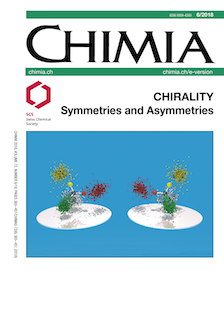Enantiosensitive Bonding of Chiral Molecules on a Magnetic Substrate Investigated by Means of Electron Spectroscopies
DOI:
https://doi.org/10.2533/chimia.2018.418Keywords:
Adsorption, Chirality, Electron spectroscopy, Magnetism, Spin polarizationAbstract
The adsorption of purely organic chiral molecules on ferromagnetic Co thin films is studied under ultra high vacuum conditions by means of synchrotron radiation-based electron spectroscopies, namely X-ray absorption and ultraviolet photoemission. X-ray absorption reveals that enantiomers with opposite handedness (R,R)– and (S,S)– of two different molecules adsorb with different strength on the Co surfaces and their valence band photoemission spectra also display distinctive features. In view of the recent reports describing the chiral-induced spin selectivity (CISS) effect these results lead us to consider the possibility that some enantiosensitivity may appear when bonding chiral molecules to a substrate with an initial asymmetry in the population of the different spin orientations.Downloads
Published
2018-06-27
How to Cite
[1]
F. J. Luque, M. Á. Niño, M. J. Spilsbury, I. A. Kowalik, D. Arvanitis, J. J. de Miguel, Chimia 2018, 72, 418, DOI: 10.2533/chimia.2018.418.
Issue
Section
Scientific Articles
License
Copyright (c) 2018 Swiss Chemical Society

This work is licensed under a Creative Commons Attribution-NonCommercial 4.0 International License.







